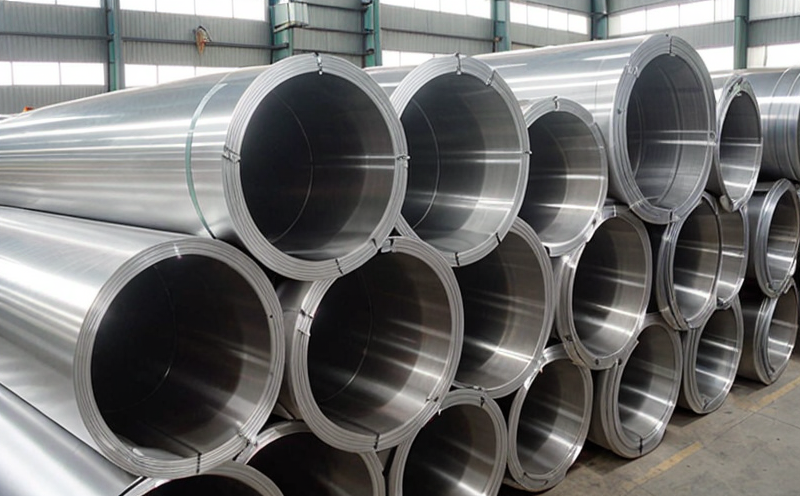ISO 16750-4 Climatic Load Testing of Electrical Systems
The ISO 16750 series is a set of standards that provides guidelines for the qualification and performance testing of automotive electrical/electronic components. One specific part, ISO 16750-4:2008, focuses on climatic load tests applied to electrical systems in harsh environmental conditions relevant to marine environments.
This type of test is crucial for ensuring that the electrical systems within marine equipment can withstand extreme weather and operational stress. The primary objective is to verify whether these components will function correctly under a range of climatic loads, including rain, humidity, temperature swings, salt spray, and other environmental factors typical in maritime conditions.
The testing procedure outlined by ISO 16750-4 involves exposing the electrical systems to specified combinations of environmental parameters. These tests simulate real-world scenarios to assess durability and reliability under varying climatic conditions. Proper design and implementation are essential for ensuring accurate results, which helps manufacturers and quality assurance teams make informed decisions regarding product improvement.
The test setup typically includes specialized chambers capable of replicating severe weather events such as tropical storms or extended periods of saltwater exposure. Specimens undergo controlled cycling through different temperatures (both high and low) alongside humidity levels that mimic those found in coastal areas. Salt spray testing is also an integral part of this process, helping to evaluate how well the materials hold up against corrosion caused by seawater.
For effective ISO 16750-4 climatic load tests, it’s important to follow strict procedures regarding specimen preparation. This includes cleaning and drying specimens before placing them into the test chamber according to specified conditions. Additionally, any connections or interfaces must be securely fastened to prevent accidental disconnections during testing.
When interpreting results from these tests, engineers should look for signs of deterioration such as insulation breakdowns, short circuits, or failures in connector integrity. Compliance with ISO 16750-4 standards ensures that manufacturers produce products capable of enduring rigorous environmental challenges faced by vessels operating in challenging environments like oceans and seas.
The outcomes from these tests provide valuable insights into the performance capabilities of electrical systems used aboard ships and other maritime equipment. By adhering to international standards, companies can demonstrate their commitment to quality assurance while meeting regulatory requirements necessary for product certification.
Benefits
- Promotes robust design by simulating extreme environmental conditions faced in marine operations.
- Enhances reliability and durability of electrical systems through rigorous testing protocols.
- Aids in meeting regulatory requirements imposed by maritime organizations worldwide.
- Facilitates better decision-making during the R&D phase, leading to improved product designs.
The ISO 16750-4 climatic load tests offer numerous advantages beyond mere compliance with industry standards. They serve as powerful tools for enhancing the overall performance and longevity of marine electrical systems. By subjecting these components to simulated harsh environments early in development cycles, manufacturers can identify potential weaknesses before they become critical issues during deployment.
Adhering to these testing procedures ensures that products are not only capable but also resilient against unpredictable weather patterns encountered at sea. This leads to enhanced safety measures for crew members and passengers on board ships, as well as increased efficiency in vessel operations due to fewer breakdowns and maintenance needs.
Why Choose This Test
Selecting ISO 16750-4 climatic load testing offers several compelling reasons for manufacturers involved in the marine sector. Firstly, it provides a comprehensive evaluation of electrical systems under realistic environmental conditions. Secondly, this type of test allows companies to demonstrate their commitment to quality assurance and compliance with international standards.
Moreover, choosing such tests can help businesses differentiate themselves from competitors by showcasing superior product reliability through rigorous testing processes. This differentiation becomes especially important when bidding for contracts or seeking certification from regulatory bodies.
Another significant advantage lies in the fact that these tests are recognized globally within the maritime industry. By incorporating ISO 16750-4 into their quality management systems, organizations can ensure consistent product performance across different geographic locations and climates.
The benefits extend further to procurement teams who understand the importance of selecting suppliers who follow stringent testing procedures like those prescribed by ISO 16750-4. Such practices contribute to long-term partnerships based on mutual trust and shared goals towards excellence in manufacturing.
Use Cases and Application Examples
- Automotive Electronics Integration: Ensuring that automotive electronics integrated into marine vehicles function properly despite harsh weather conditions.
- Offshore Wind Turbine Monitoring Systems: Verifying the reliability of monitoring systems used to track performance metrics in challenging offshore environments.
- Satellite Communication Equipment: Testing satellite communication equipment for durability and signal integrity under various climatic loads encountered during deployment.
The applications are vast, ranging from simple diagnostic tools installed on smaller vessels to complex control systems aboard large cargo ships. All these components rely heavily upon electrical systems that must operate flawlessly even when exposed to extreme environmental factors.
By leveraging ISO 16750-4 climatic load tests, engineers can develop more resilient and dependable solutions tailored specifically for the marine environment. This ensures not only compliance with industry standards but also enhances safety and operational efficiency in maritime operations.





